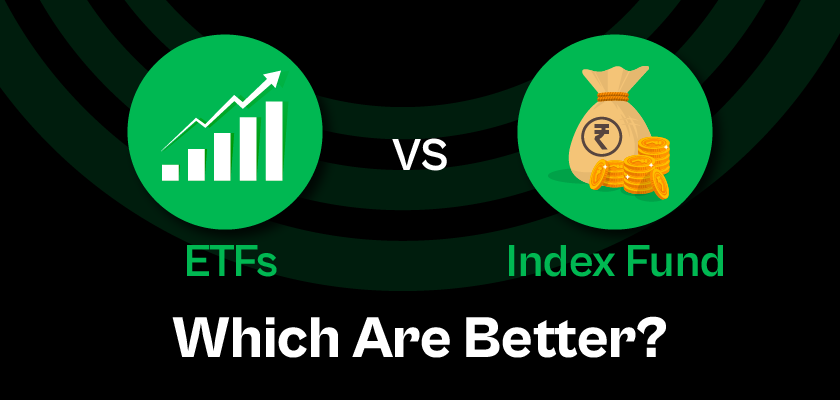In the world of passive investing, two giants have long dominated the conversation: Exchange-Traded Funds (ETFs) and traditional Index Funds. Both offer a low-cost, diversified way to build wealth without the complexities of stock-picking. But as we navigate the investment landscape of 2025, a clear trend is emerging, and the battle for investor preference is heating up.
So, which passive vehicle is winning the race in 2025? While index funds continue to hold their ground, the data points to a massive surge in the popularity and adoption of ETFs, especially among younger, tech-savvy investors.
The Rise of the ETF: A Global Phenomenon
The numbers for 2025 are staggering. The global ETF industry is on track for record-breaking growth, with total assets under management (AUM) projected to reach an impressive $25 trillion by 2030. What’s driving this immense growth?
Digital Accessibility and a New Generation of Investors: For Gen Z and Millennials, who have a preference for on-demand and tech-driven solutions, ETFs are a natural fit. They can be bought and sold on mobile apps throughout the trading day, just like stocks. This intraday liquidity and ease of access have made them a go-to choice for a generation that is comfortable with making quick, informed decisions. Data from platforms like NAB in Australia shows a significant jump in ETF trades by young investors, particularly on days when the market dips, demonstrating a sophisticated “buy the dip” strategy.
Product Innovation: The ETF market in 2025 is no longer just about tracking broad market indices like the S&P 500 or Nifty 50. We are seeing an explosion of specialized and thematic ETFs that allow investors to gain exposure to specific sectors and trends. From clean energy and cybersecurity to robotics and defense, these thematic ETFs allow investors to align their portfolios with their beliefs and capitalize on long-term growth trends without having to pick individual stocks. This niche diversification is a major draw for today’s value-driven investor.
Tax and Cost Efficiency: While both ETFs and index funds are known for their low costs compared to actively managed funds, ETFs often have a slight edge. Their structure can make them more tax-efficient due to a process called “in-kind creation and redemption,” which can help minimize capital gains distributions to shareholders. Additionally, their expense ratios are often a fraction of their index fund counterparts, and these seemingly small savings can compound into significant wealth over a long investment horizon.
The Case for Index Funds: Simplicity and Discipline
Despite the ETF boom, index funds are far from obsolete. They remain the preferred choice for a large segment of the investment community, particularly those who value simplicity, discipline, and automation.
Systematic Investing (SIPs): The biggest advantage of a traditional index fund is its seamless integration with Systematic Investment Plans (SIPs). For new investors and those who prefer a hands-off, “set it and forget it” approach, an automated monthly SIP into an index fund is the epitome of disciplined investing. While some brokerage platforms are developing workarounds for ETFs, the native SIP feature of an index fund remains a powerful tool for consistent, long-term wealth creation.
Convenience and No Trading Account Required: For many, the idea of opening a trading and Demat account is a barrier to entry. Index funds can be purchased directly from the fund house or through mutual fund platforms without the need for these accounts, simplifying the investment process for first-time investors.
No Bid-Ask Spread: Unlike ETFs, which trade on an exchange and can have a bid-ask spread that can eat into returns, index funds are priced only once a day at their Net Asset Value (NAV). This eliminates the risk of buying or selling at an unfavorable price and is a key factor for investors who prioritize transparent pricing over intraday liquidity.
The Verdict: It’s Not a Zero-Sum Game
In 2025, the debate isn’t about which one is inherently “better,” but rather which one is a better fit for a specific investor’s goals and style.
For the “Active Passive” Investor: If you are a hands-on investor who wants to control the exact price of your entry and exit, and you’re interested in niche sectors or themes, ETFs are the clear winner. They offer the flexibility and intraday liquidity that the modern, digitally-native investor craves.
For the Disciplined, Long-Term Saver: If your goal is to build wealth steadily over time with minimal effort, an index fund with an automated SIP is a powerful and low-stress solution. It is the perfect tool for retirement savings and other long-term financial goals.
The reality is that both ETFs and index funds are poised for continued growth. The trend for 2025 is not about one replacing the other, but rather about a growing number of investors—of all ages and experience levels—embracing the power of passive, low-cost investing. The rise of ETFs is simply a reflection of an investment landscape that is becoming more accessible, diverse, and responsive to the demands of a new generation of wealth builders.







